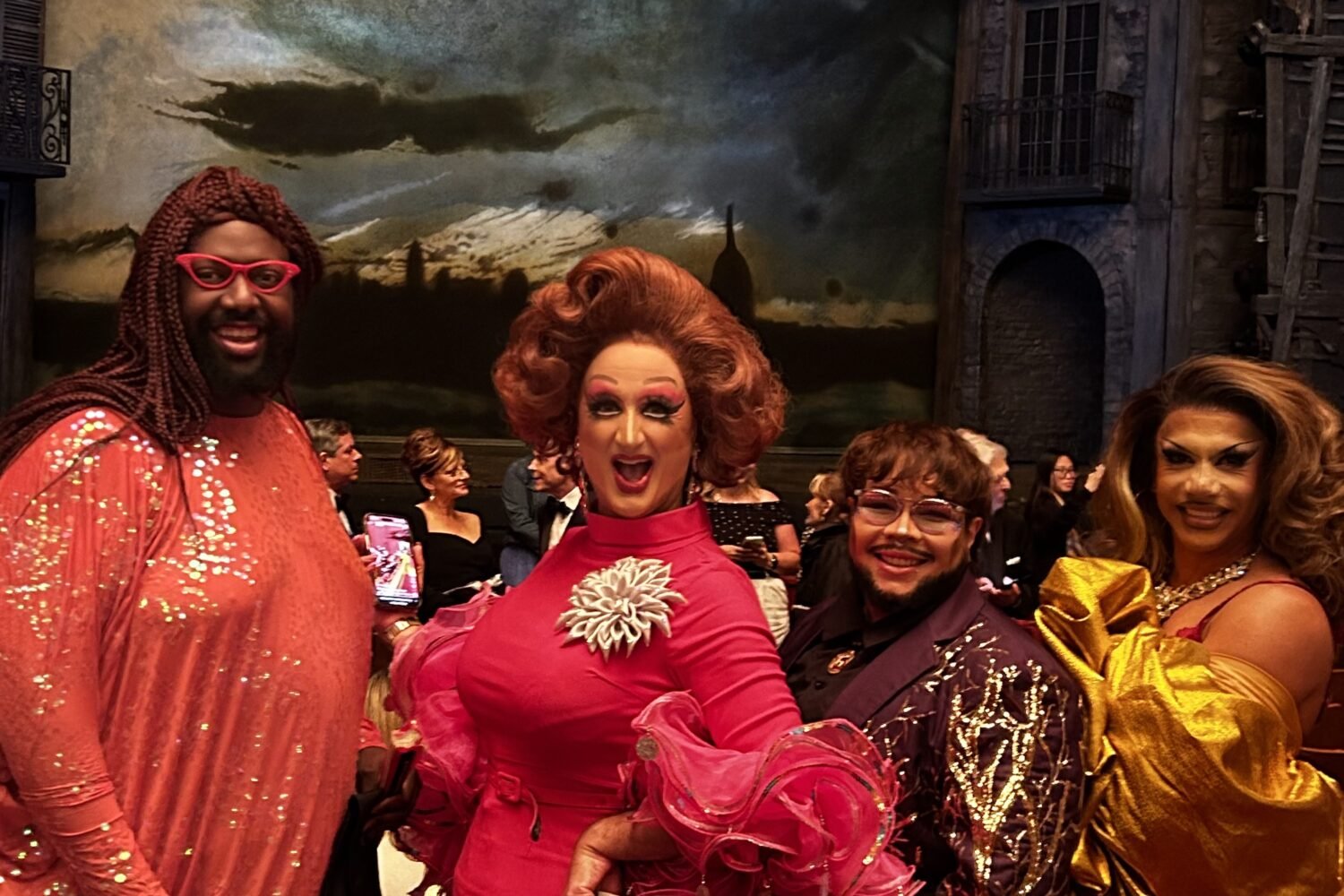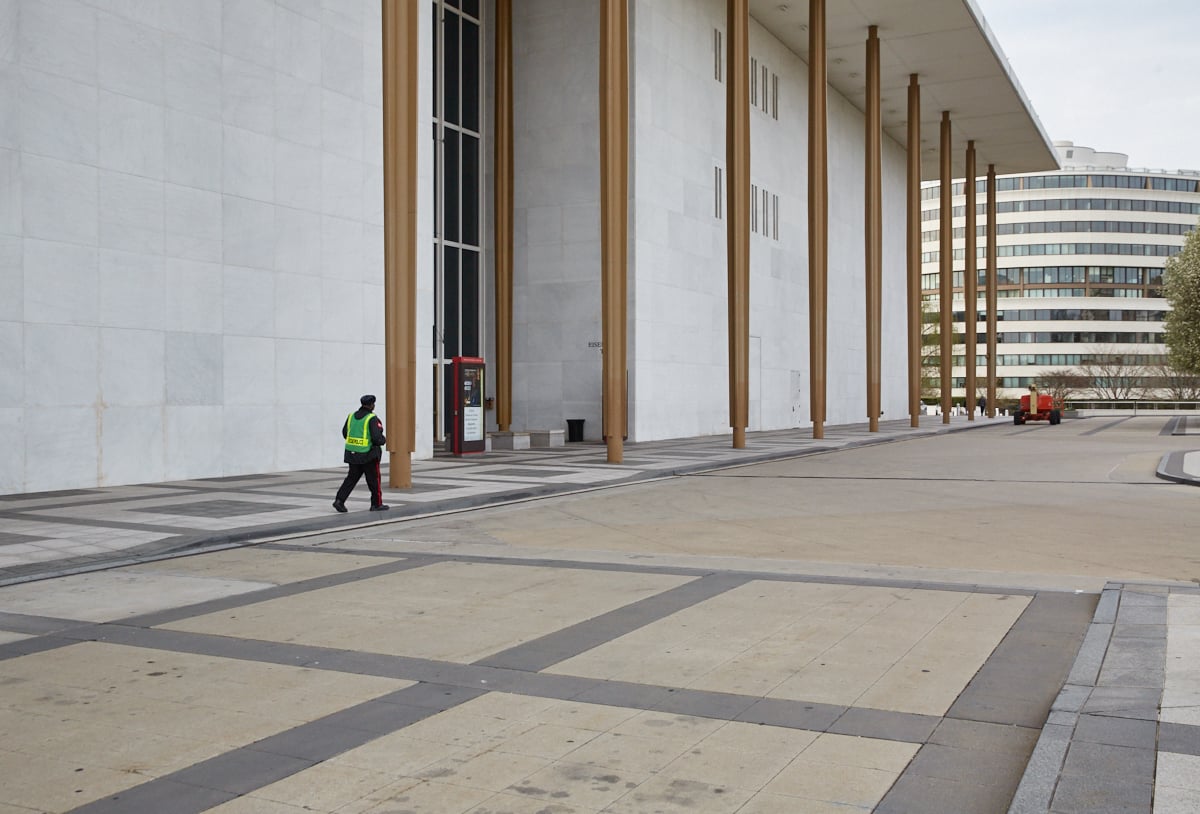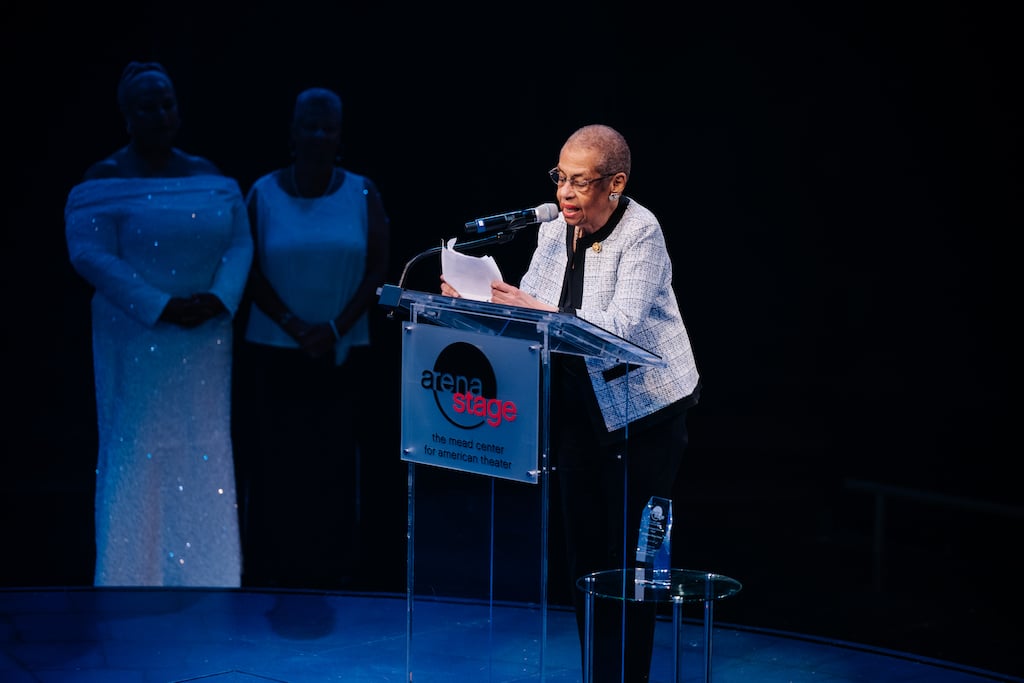When the Kennedy Center opened in 1971, the New York Times called the building “a national tragedy” and likened its vast halls to “Soviet palaces of culture.” Since then, a lot of people have come around to its architectural charms. But one big problem remains: It wasn’t meant to be a place for people to hang out.
That was less of an issue in the ’70s, when Kennedy Center patrons mostly arrived in cars, often from the suburbs. But as urban living has changed and more people get around town on foot, bike, and scooter, the venue can feel moated off from the rest of DC, both physically and psychologically. When was the last time you thought, “Maybe I’ll wander over and see what’s happening right now at the Kennedy Center”?
The Reach, the center’s first major expansion since Nixon was President, is an ambitious effort to better connect the site to the rest of Washington. It places a $175-million bet on the idea that audiences will want to engage with artists in a more casual setting. Its large outdoor plaza atop the striking, Steven Holl–designed space—including an aboveground swoosh that’s now incorporated into the center’s logo—is meant to turn it into a place where people will drop by and linger.
Kennedy Center president Deborah Rutter has already brought in world-class talent such as Gianandrea Noseda, Renée Fleming, and Q-Tip to give a vitamin shot to the component institutions. We talked to Rutter about why the center is making this investment and how the Reach fits into her larger vision.
When you started this job in 2014, the Reach was already in the works, but it was a very different plan.
I said, “Tell me what it is we’re building and why.” Literally, they sent me one piece of paper. There were room dimensions: two at this size, one at this size, one at this size. I said, “Okay, what’s the meaning behind this?” Somebody said, “Well, we don’t really have enough spaces for the education activities or enough classrooms. And we have a party space, but it’s not very attractive, so we’d like to have another one of those.”
It sounds like you’re putting an addition on a house.
Exactly. It was like you needed a new kitchen and the contractor asks how many more drawers you want. But that’s not what you’re really trying to achieve. So they wanted me to sign off on design drawings for what they had, and some of the things they had at that time just seemed so impractical. So I just said, “Hold on here. We need to figure out what we’re doing and why we’re doing it.”
You’ve got to play the hand you’ve been dealt: I can’t change Metro. I can’t change the location.
When we sat together, we asked questions like “What is it that you love about the center?” “What is it that doesn’t work that we really need to figure out how to address?” “Can a new project address it?” “What do we think we’re going to need in the future?”
One of the biggest issues is that people feel unwelcome. No matter how much you love the Kennedy Center, when you walk through that door, there’s an intimidation factor. It’s a really busy, active place, but it doesn’t feel busy and active, because you only see these marble walls. Nobody knows what’s really going on.
So it wasn’t, you know, Deborah Rutter is putting a stake in the ground and I’m going to show everybody. It was more of an evolution—getting to know the center, getting to know how the center was perceived by the community, and really talking to our artists about what they were interested in doing.
The Reach is opening with a big festival featuring a wide range of performers. But I’m interested in what happens the day after it ends. How does the Reach stay in Washingtonians’ lives after that?
My philosophy is that arts organizations are community assets. In the case of the Kennedy Center, we’re the creative cultural asset to the nation. Therefore, we need to represent all of the arts to all people—not like, “We’re going to do something and you’re lucky to come.”
There will be things we will do that are performance-based. But most of the time it’s going to be about doing. It’s a place that will be open late so we can have post-performance gatherings of a wide variety.
So if I’m hearing you correctly, it’s like an engine for the rest of the building?
Oh, that’s a lovely idea. But it’s an engine without an encasement. So you can look in and see it. It’s driving future programming, and it’s building a connection for audiences.
One interesting aspect is that anyone will be able to walk in and watch rehearsals for a lot of the programming.
Along the way, there were naysayers who said, “So-and-so is never going to want anybody to see anything but the final product.” We said, “That’s fine—they can go work behind the closed door.” But the vast majority, especially of the younger artists, understand that this is a process and that people want to be able to see.
How do you envision getting Washingtonians to actually come down to take part in this sort of iterative art-making?
You’ve got to play the hand you’ve been dealt: I can’t change Metro. I can’t change the location. What I can change is how important it is to be here and what it feels like when you’re getting here. So that’s why we created a destination [outdoor area]. That’s why we are working to create destination food and drink experiences.
Besides the Reach, what did you want to do when you started at the Kennedy Center?
For me, it was about bringing the staff closer together, because they were working efficiently but it was in silos and therefore not capturing the opportunity of working across the art forms. The institution was, I think, yearning to have this greater dialogue. The greatest motivator for me was, hey, I care about the arts in this country, and I didn’t think about this as the national cultural center.
The knock on the Kennedy Center has always been that the orchestra is not in the top tier, the acoustics are bad . . . .
But if you were to look at other performing-arts centers across the country, they don’t have the diversity and the variety we do. So we are unique because we have people who program all the art forms within our organization. We are actually offering a point of view and celebrating the fact that all of the arts exist here. The challenge is: How do we get people to think about us that way? Everybody knows the two days of the year that we’re on television.
You mean the Kennedy Center Honors and the Mark Twain Prize for American Humor. But those, to me, have never been what this place was all about.
Oh, thank you. I love them both, and they are big, big moments and we really use them to bring everybody here. But they are only two days. They don’t tell the whole story.
One of the things you’ve done to shake things up is encourage more conversation among the staff.
Because that’s how good stuff comes. You know, we have this huge presence around hip-hop and contemporary music and spoken word and dance, and those ideas came from all different kinds of sources. We’re in a constant learning mode.
One of the conversations I’ve had was with a woman who specializes in legal support for women suffering from human trafficking. What does that have to do with the Kennedy Center? Well, ultimately we brought in a chamber opera that tells that story. That’s how these ideas come from anywhere. I think that what I can take credit for is giving [employees] the environment and the permission to have those conversations and make those proposals, and then having the long-term dialogue with public relations, marketing, and development people, who then say, “Oh! Here are the other ideas that support this.”
Before coming here, you ran arts organizations in three great cities: LA, Seattle, and Chicago. What do you like about living in Washington?
It is such a beautiful city. And it’s filled with really interesting people. Somebody asked me about it and I said, “You know, the biggest difference here is that every single person I meet is really smart and really cares about the world. Even the person who’s cutting your hair really cares about the world and knows what’s going on, whereas that’s just not true in other places.”
This interview has been edited and condensed. This article appears in the September 2019 issue of Washingtonian.



















